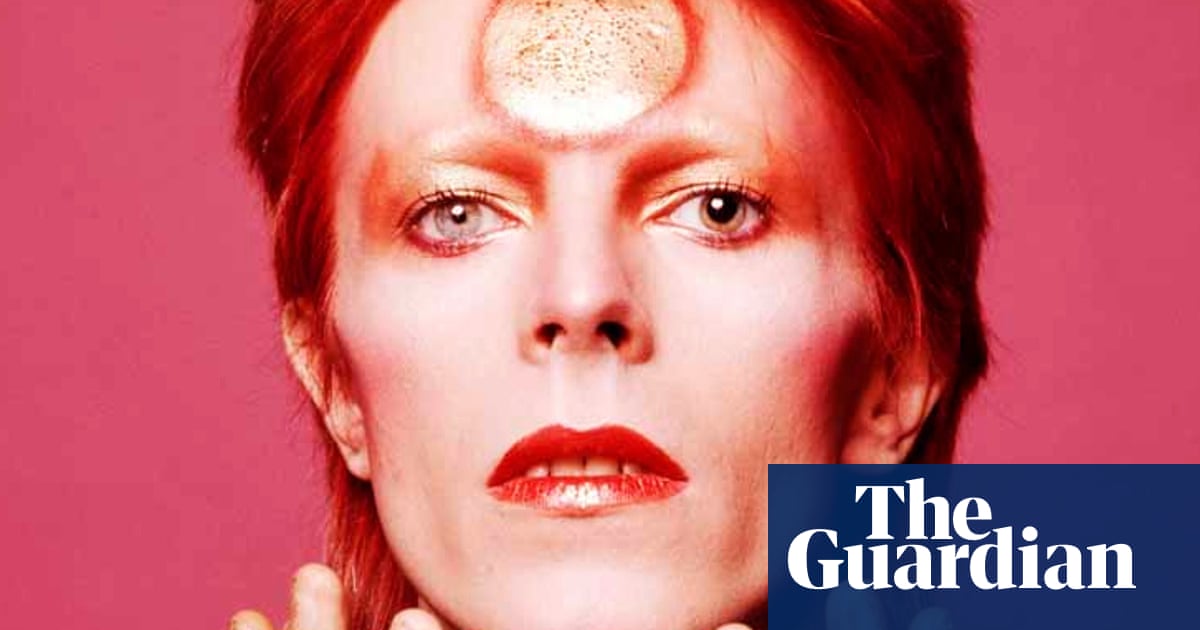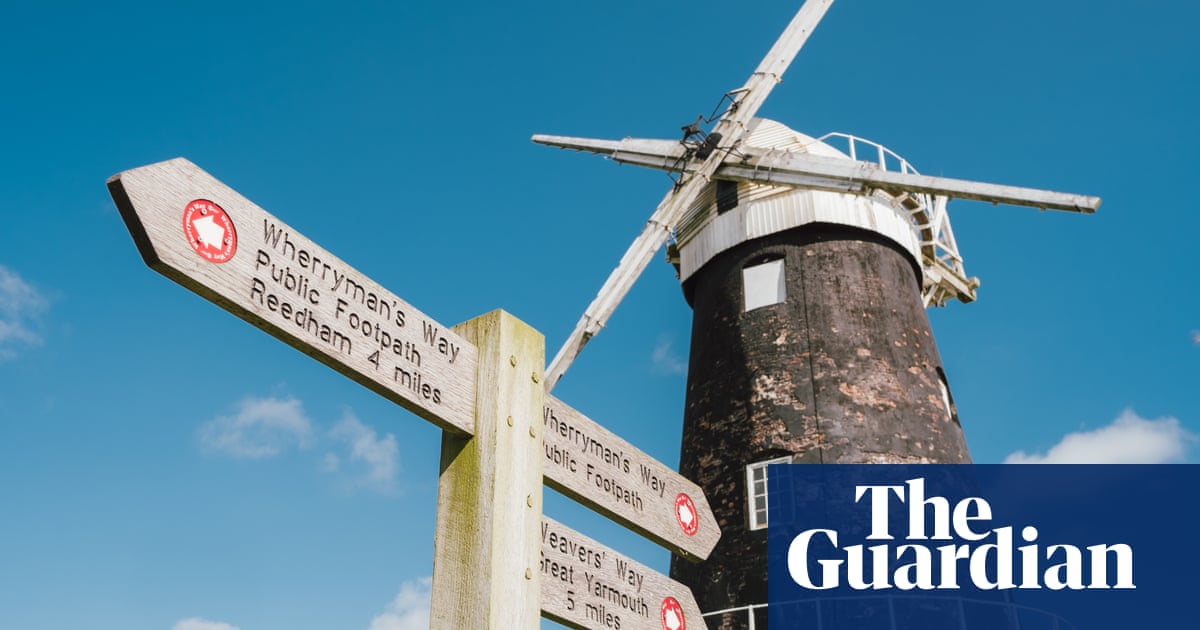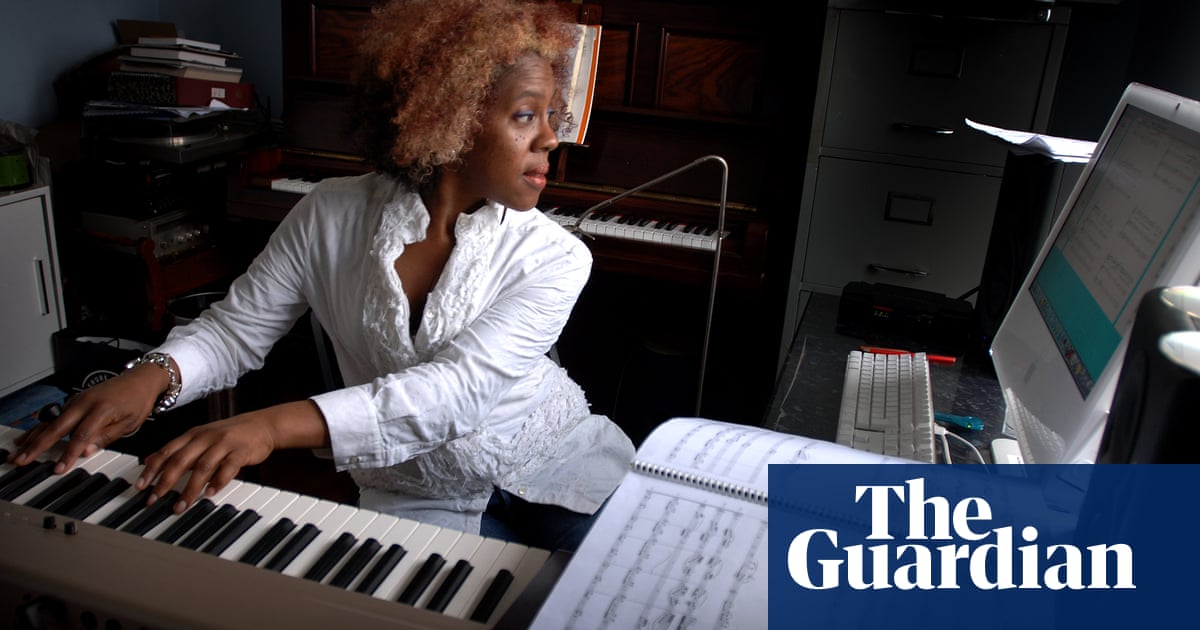
This Thursday marks 50 years since David Bowie’s Life on Mars? was released as a single. A cornucopia of surreal images, a musical soap opera to float away with, it still regularly appears in lists of the greatest ever Bowie songs – and indeed lists of the greatest songs by anyone.
Trying to deconstruct this tale starring mice, Mickey Mouse and a mousy-haired girl is about as easy as getting to Mars itself. I should know as I cycled one of the song’s lyrics – “from Ibiza to the Norfolk Broads” – pedalling 2,700 miles in search of a deeper understanding. Other writers have followed literary footsteps to get into authors’ minds, so why not a music lyric?
My journey actually began not in Ibiza but the place the song did: the borough of Bromley. After huffing and puffing 13 miles across London, I wheeled through Croydon Road Recreation Ground to a rusting Edwardian bandstand. It had seen better days but it had also seen greatness, because this is where Bowie sat and wrote Life on Mars? in 1971. He spun a cosmic yarn from that mousy girl’s disillusionment and her escape through the silver screen, in surreal imagery of cows, clowns and cavemen. Her frustration and will to escape suburban dullness was surely his own.
Then aged 24, Bowie was gaining confidence as a writer. Commenting on the song’s construction he later said: “This song was so easy. Being young was easy. A really beautiful day in the park, sitting on the steps of the bandstand. ‘Sailors bap-bap-bap-bap-baaa-bap’ … Middle-class ecstasy.” He took a riff he couldn’t shake back to his flat in Haddon Hall, Beckenham. “I started working it out on the piano and had the whole lyric and melody finished by late afternoon. Nice.”
What he didn’t mention was that the song was born from a kind of musical menage a trois with Frank Sinatra and singer Claude François, who wrote a chanson in 1967 called Comme d’Habitude. Bowie was in London’s Denmark Street rewriting European songs for anyone who would take them. When Comme d’Habitude landed in his lap, he turned it into a song called Even a Fool Learns to Love. The publisher thought it was awful and the chanson instead passed to Paul Anka, who came back with My Way. Bowie, pride battered but not burst, snatched the chord progression and rearranged it with an ascending rock twist.
Having flown to Ibiza, cycled 900 miles around the island and then onward through the Spanish and French countryside, I now stood – lactic acid pooling in my thighs – outside François’s old house in Dannemois, 30 miles south of Paris. Taking the official tour, more drama came to light. François had died young after trying to fix a squiffy lightbulb while sitting in his bathtub. After explaining my mission to the tour leader, her eyes lit up: Life on Mars? was her wedding song. She loved the simplicity of its opening notes, a piano chord that transported her to her “happy place”, and just outside “Clo-Clo’s” bathroom, we performed a shaky duet.
Even in our impromptu version, the lyrics tumbled us into Bowie’s subconscious – and the music carries you deeper still. After the song’s recording session, Rick Wakeman – the pianist who embellished the chords Bowie had played him on a “battered 12-string” – told his friends he’d just played on “the best song he’d ever had the privilege to work on”. Drummer Woody Woodmansey has said the notoriously hard-to-please BBC string players were awaiting instruction, so guitarist Mick Ronson, having written his first ever string arrangement and wildly nervous, rolled a cigarette and explained how it should be played. Having given it the once over, the BBC instrumentalists were so impressed, they performed it a second time to master it. Producer Ken Scott recognised it was destined for greatness too, calling it “the big one” and saving it for the climactic sessions for Hunky Dory, the album on which the song appeared in 1971.
Bowie’s vocals crown it all, his B flat top note only a semitone below the famous “vincero” climax from Nessun Dorma. Leah Kardos, musicologist and author of Blackstar Theory: The Last Works of David Bowie, says the song has always been “proof positive of Bowie’s sophisticated songwriting chops”, with a “central vocal performance that is tender, gymnastic, and camp. There’s not a detail out of place, even down to the ringing telephone that interrupts the ending, snapping you back to mundane reality.”
Bowie had a make-up artist he referred to as “my Picasso”, a Frenchman named Pierre La Roche who painted Bowie’s shock of blue eyeshadow in the Life on Mars? video and later created the lightning bolt on the cover of Aladdin Sane. Prior to Dannemois, I’d spotted a settlement high in the Ardèche mountains called Saint Pierre-la-Roche – could the mysteries of Life on Mars? be unravelled from on high? Having wheezed eight miles uphill, the answer was “obviously not, you’re an idiot”, so I watched the video instead, directed by photographer Mick Rock.
Music videos can age poorly. Rock avoids that with a simple bleached-out background on which Bowie performs in La Roche’s scene-stealing eyeshadow and a pinch-waisted Freddie Burretti suit, all set aflame by his auburn hair: a defiantly queer look. “When Bowie declared himself bisexual in 1972, the decriminalisation of homosexuality in England and Wales was only five years old, and the only LGBTQ+ representation you could find in popular culture came in the form of limp-wristed caricatures on comedy shows like Are You Being Served?,” says Nicholas Pegg, author of The Complete David Bowie. “David kicked down that door and shone a light into many lives.”
The song is as potent as ever. When St Albans cathedral organist Nicholas Freestone played it on the day of Bowie’s death in 2016, it went viral. Rick Wakeman delivered an emotional rendition on Radio 2 that had people pulling over to the side of the road to cry. And at that year’s Brit awards, Lorde, whom Bowie adored, staged a powerful version that felt like a baton being passed to the next generation.
I pedalled onwards from Dannemois to the Honky Château recording studio near Paris where Bowie recorded Low. I walked with the ghost of Chopin, and of Bowie playing ping-pong with Iggy Pop. The original Steinbach piano Bowie played on the album remains. Then it was east to Moscow, where Bowie landed in 1973 – the year of the song’s release as a 7in – to find his music banned by the Approximate List of Foreign Musical Groups and Artists Whose Repertoires Contain Ideologically Harmful Compositions. Here, a conundrum: might Vladimir Lenin actually have been the inspiration behind another of the song’s lyrics, “Lennon’s on sale again”?
“Internet-based bunkum,” a young Muscovite waitress in the city’s David B cafe replied. This was all part of the fun. Bowie once said to his artist friend Dana Gillespie: “Never explain your songs, leave them in suspense.” Pegg readily agrees: “The ambiguity, the mystery, is key. He is actively inviting us to bring our own interpretations to the table. Every single one of us has a slightly different take on Life on Mars?”
I kept searching, taking the same Trans-Europe Express Bowie rode on. Then, to Berlin, where he played Heroes outside the Reichstag in 1987. Legend has it that the music reached both sides of the wall, and inspired rumblings of dissent that led to its fall. Then I cycled, goose-pimpled, to Düsseldorf for kosmische and Kraftwerk, which influenced his electronic forays, before Amsterdam, and the music of Jacques Brel that inspired Life on Mars? Bowie often covered Brel’s song Amsterdam during concerts – a tale of sailors singing, drinking and dancing with sex workers. The city’s image is now on the mend but its seedy dramas remain in Bowie’s lyric: “Sailors, fighting in the dance hall.”
Under the glow of halogen light, I sprinted to another port and took the ferry from the Hook of Holland until Rule Britannia, as Bowie sang, was no longer out of bounds. Still lost in the song, and now English rain, it made sense to take a scientific approach to its mysteries. I visited Norfolk’s Seething Observatory to see if I could glimpse Mars and answer the title’s question myself. A nefarious covering of nimbus clouds kept the song’s secret intact. I conceded defeat, lugging my legs over one final bridge into Wroxham and the Norfolk Broads. There I found “the mice in their million hordes” Bowie sang of. Tourists fussing, flopping and frolicking, feeding the ducks and themselves; pints, packets of crisps and Pomeranians. Middle-class ecstasy.
As I walked into the tourist information office, a woman behind the counter noticed my cycling attire. “Where’ve you come from?” she asked. “Ibiza,” I replied wearily. She joined the dots. “You’re kidding? I love David Bowie. I saw him at Wembley Arena once and when it came to that part of the song, me and my friends all yelled, ‘... from Ibiza to the Norfolk Broads!’ Everyone loves David Bowie, don’t they?”
I think they do, and 50 years on, his most-loved masterpiece can still pull you in any direction. It is an open-ended question to be joyously reinterpreted and played again and again. What a ride.












